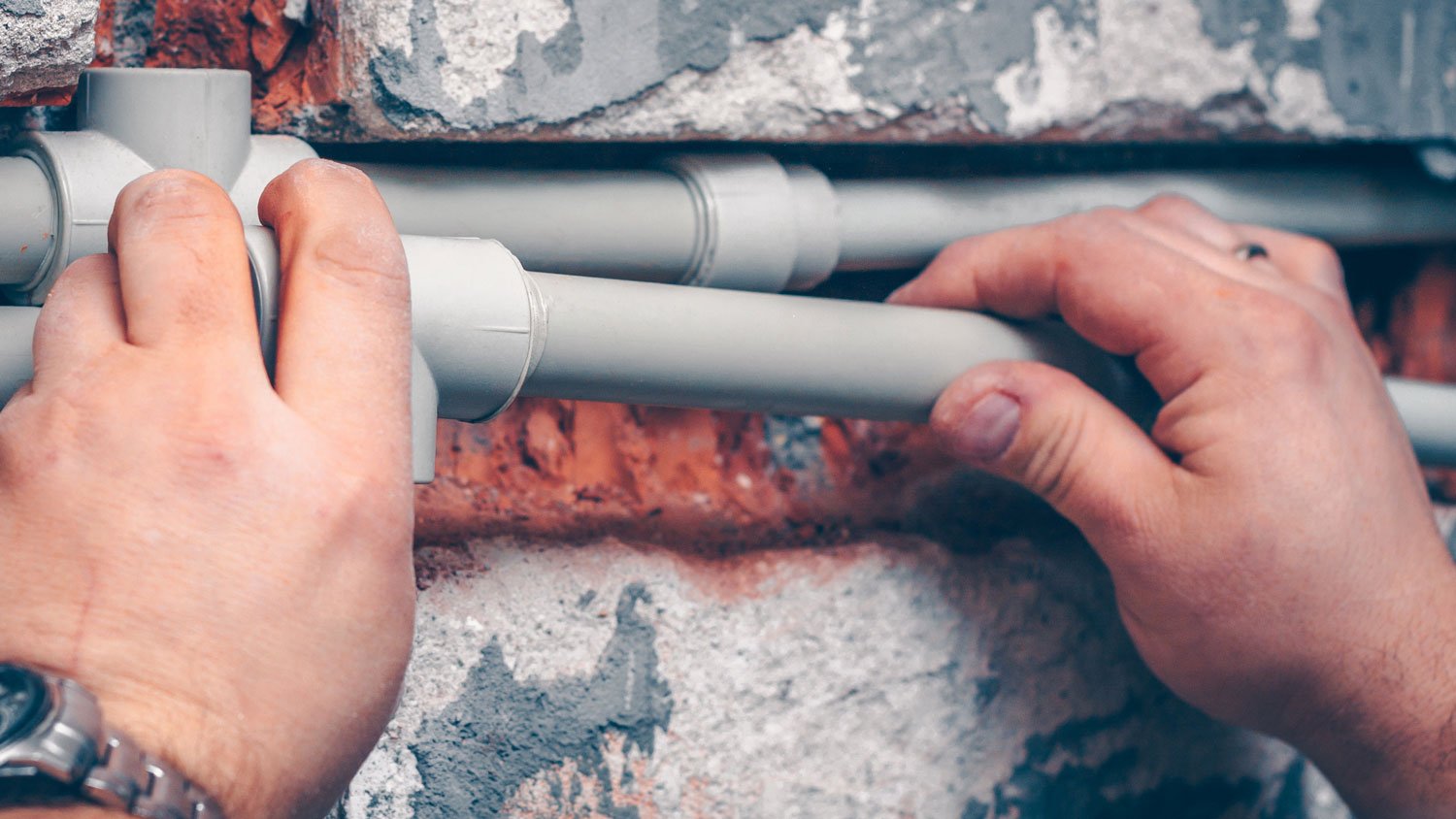
How much does hydro jetting cost? Learn hydro jet drain cleaning prices based on factors like the extent of the clog, accessibility, and more.
PEX pipe is the current hype, but don’t discount tried-and-true copper plumbing just yet


Replacing copper with PEX pipes increases your energy efficiency and saves money
However, PEX isn’t heat-resistant and could impact drinking water quality
PEX costs $0.50 to $2 per linear square foot, while copper costs $2 to $4 per square foot
For many, copper piping is the go-to plumbing product. To be fair, copper was the only option on the market for years, so the choice wasn’t exactly a hard one to make. But the plumbing world has a new contender these days and it’s all the rage. PEX piping is affordable, flexible, and durable, swaying many homeowners to consider replacing copper with PEX. Is it worth making the switch? Let’s break down the pros and cons of PEX.
PEX pipe is a newer alternative to copper and galvanized piping. First introduced in the 1980s, most plumbers now fit new construction homes with PEX, as well as remodeling projects.
PEX pipe is a cross-linked polyethylene flexible tubing that is blue and red in color. Homeowners and plumbers alike praise this plastic pipe’s flexibility and durability.
Copper has been a tried-and-trued piping material for years, but it’s not flawless. Here are the advantages of replacing your copper pipes with PEX.
PEX pipes have a lower thermal conductivity than copper, meaning that PEX can keep water hot for longer. This means you’ll save more energy because PEX piping prevents heat loss as water moves through your pipes.
Metal pipes can tick, rattle, and bang, but since plastic PEX pipes are flexible, they eliminate most of the turbulence as water flows through them. Ah, a quiet retreat! Unlike copper, PEX is also less likely to “hammer” or bang when your valve shuts off the water.
PEX pipes are flexible, so you can easily bend them in any direction without needing to cut pipe, attach connectors, and use elbow joints at, well, every turn. Because you don’t need to cut your pipe and use multiple fittings, it’s less likely to leak.
It’s also possible to feed this pipe behind walls and floors. All of these benefits add up to a cheaper installation process, since there’s less cutting, fitting, and measuring required.
Copper pipes burst easily when frozen, but PEX pipes can expand up to eight times their size before it freezes. You should still take necessary precautions to keep PEX pipes from freezing, but the copper ones are more likely to burst and flood your house when the temps drop below freezing.
PEX pipe won’t corrode as copper would and is acid resistent. Plus, PEX is immune to mineral build-up common in areas with hard water, which will help improve your water quality.
It cost less to manufacturer PEX than copper since the process requires less energy. Also, PEX is lighter than its metal counterpart, meaning that you’ll save money on shipping and handling. And because PEX requires less sourcing and production, it has a smaller carbon footprint than traditional copper piping.

While replacing copper with PEX pipes sounds beneficial, PEX is not always the ideal solution for your home. Here are a few precautions to consider before switching over.
Based on a study conducted by Purdue University, 11 chemicals were found inside PEX pipes, impacting drinking water quality. This study also discovered that the odor found in PEX pipes exceeded the maximum drinking water odor limit of 3 set by the Environmental Protection Agency.
Copper pipes have been around for centuries, and in residential settings, it’s not uncommon for them to last 50 years or more. PEX’s track record is much shorter, roughly 30 years. In fact, it was only approved for use in California in 2010. While PEX can last up to 50 years under the right temperature and pressure ratings, there’s no way to verify those claims, or identify any long-term drawbacks just yet.
PEX is susceptible to damage from the sun’s UV rays. If you need it installed outside, ask your plumber about how they plan to protect it.
PEX pipe is more affordable than copper, about $0.50 to $2 per linear square foot, on average. Copper costs $2 to $4 per square foot. It’s also less expensive to install PEX piping in your home. If you want to save a few bucks, PEX gives you the option to replace only specific sections of your plumbing system since copper and PEX piping are interchangeable. Consult a professional plumber near you to learn more about installing PEX in your home.
From average costs to expert advice, get all the answers you need to get your job done.

How much does hydro jetting cost? Learn hydro jet drain cleaning prices based on factors like the extent of the clog, accessibility, and more.

Everyone can relate to having toilet issues—we’ve all been there. There are several reasons why your toilet might need repairs, and the cost varies based on the damage.

Wondering how much shower valve replacement costs? The answer depends on type, labor, and materials—but foresight and research can save you some money.

Need to stop a plumbing leak quickly and minimize water damage in your home? Buy yourself some time with these temporary fixes for a leaking pipe.

If your tub stopper is ruining bathtime or it’s time for a new one, you can easily DIY the job. Keep reading to discover how to remove a bathtub drain stopper.

We’ll show you how to keep pipes from freezing in the winter and how to thaw yours before they burst.